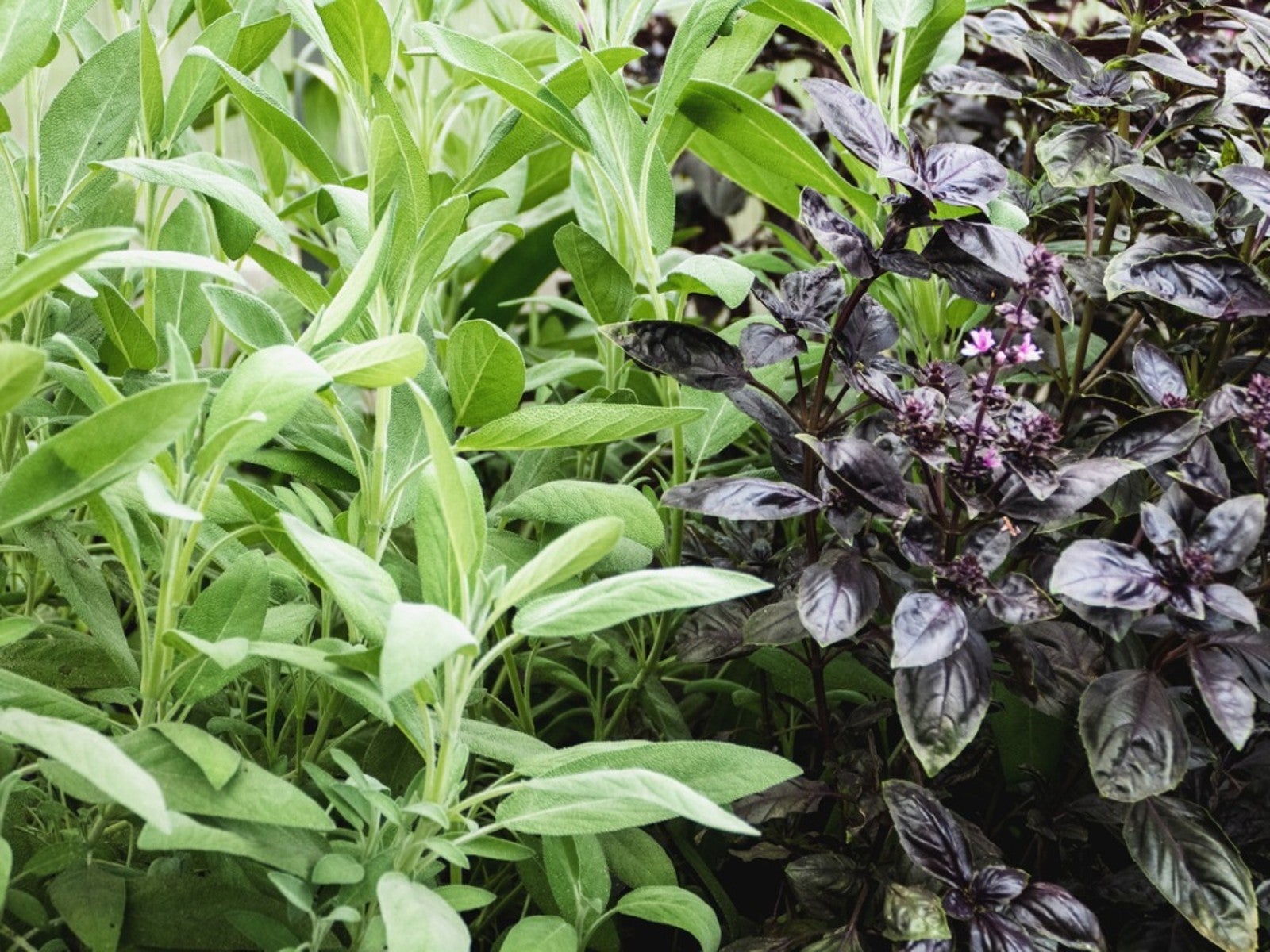Best Sage Companion Plants In The Garden

Sage is a hardy perennial grown for centuries for use medicinally and as a culinary herb. Over the course of those centuries, organic gardens have found that companion plants for sage encourage the vigor of the herb as well as the sage companion plants. What grows well with sage? There are a number of companion plants for sage. Continue reading to learn about companion planting with sage.
Companion Planting With Sage
The science of companion planting is at this juncture relatively unstudied, but anecdotal evidence going back centuries proves its effectiveness. Strong smelling plants and herbs have been included in companion plantings for centuries because their pungent aroma repels pests. Some companion plants encourage beneficial pollinators. The texture of a plant like sage may make it favorable as a companion plant. Sage also makes a valuable companion plant due to its flowers. When the plant blooms, it entices beneficial pollinators into the garden.
What to Plant With Sage
Just as not every person is receptive to another person, some plants do well with sage and others do not. So what plants should be planted with sage? Sage benefits all the Brassicas. These include broccoli, Brussels sprouts, cabbage, cauliflower, kale and kohlrabi. Sage repels pests such as cabbage moths, loopers, maggots, worms and black flea beetles. Sage repels carrot rust flies. It also repels pests around strawberries and is said to enhance their flavor. Sage attracts beneficial insects around tomato plants.
As for the herb garden, sage can be used as a companion planting next to lavender, lemon balm, lemon thyme, lovage, oregano, parsley, rosemary, savory, thyme and tarragon.
What Not to Plant With Sage
Sage is said to stunt the growth of cucumbers. Instead, plant herbs such as catnip, chives, or dill, or annuals like marigolds or nasturtiums to repel pests such as cucumber beetles and squash bugs.
The rule of thumb in the garden is to plant like with like. This means if you have drought tolerant plants they should be grouped together just as those that like consistent moisture should be planted together. Alliums (onions, leeks, garlic) for instance, like moist conditions, but sage does not. Instead, plant summer savory or chamomile as companion herbs around your allium.
Sage is said to slow rue’s growth. Wormwood is detrimental to sage, and fennel is allelopathic - meaning it produces a chemical that is detrimental- to most plants including sage, so avoid its use nearby.
Gardening tips, videos, info and more delivered right to your inbox!
Sign up for the Gardening Know How newsletter today and receive a free copy of our e-book "How to Grow Delicious Tomatoes".
About Sage Plants
Sage, with its square stems, is a member of the mint or Lamiaceae family. Most varieties of sage (Salvia officinalis) grow to about 3 feet (91 cm) in height and the same distance across. Sage’s genus "Salvia" comes from the Latin “salveo,” meaning “be well,” a reference to the herb’s medicinal uses. Fresh sage has a pungent aroma redolent of pine and citrus. While it can be used both fresh and dried, fresh sage imparts more of a punch than dried.
Sage thrives in full sun to partial shade and should be planted in well-draining, nutrient rich soil. Resistant to deer and drought and salt tolerant, sage can be propagated via seed, division or stem cuttings. Sage flowers late in the growing season which makes it a good choice for pollinator gardens or areas that receive little water.
What is Companion Planting?
There are a couple of ways to interpret the term companion gardening. Of course it may be used to refer to complementary colors or textures but for our purposes, companion planting with sage refers to the close planting of two or more species wherein one or more species benefits from the close proximity of the other. Other plants may serve as companion plantings to provide shade or ground cover to keep plants from getting sunburned, keep roots cool and encourage growth or flavor. Still other companion plantings like beans, which add nitrogen to the soil, are used to improve soil nutrition.
Incorporating companion plants for sage works much the same as the natural ecosystem. It increases biodiversity and aids in balancing the ecosystem, allowing nature to do her job.

Amy Grant has been gardening for 30 years and writing for 15. A professional chef and caterer, Amy's area of expertise is culinary gardening.
-
 Looking For Plants To Give You The Soft And Fuzzies? Try These 5 Fuzzy Leaf Plant Options
Looking For Plants To Give You The Soft And Fuzzies? Try These 5 Fuzzy Leaf Plant OptionsLovers of texture, drama, silver foliage and tactile plants will adore these special sensory garden additions. These fuzzy leaf plant options will leave you all aglow
By Susan Albert
-
 Get Ready For A Summer Of Hummers! Grow These Full Sun Hummingbird Plants and Flowers
Get Ready For A Summer Of Hummers! Grow These Full Sun Hummingbird Plants and FlowersIf you’re lucky enough to enjoy a sunny backyard, make sure you are maxing out on your pollinator opportunities and grow these full sun hummingbird plants and flowers
By Tonya Barnett